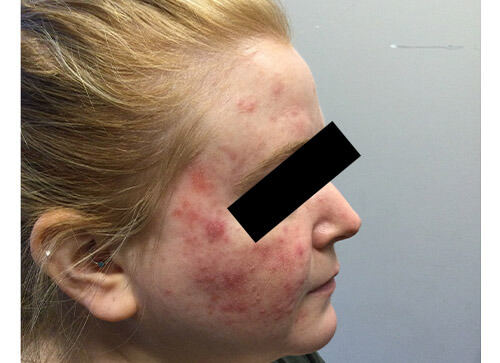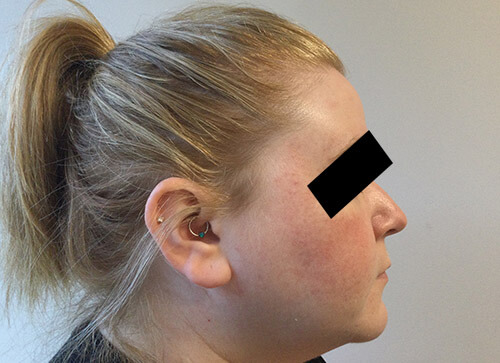Rosacea
What is Rosacea?
Do you suffer from frequent and easy flushing? Have you noticed persistent redness of the skin, broken blood vessels, or acne-like bumps on your face? You might be suffering from rosacea.
Rosacea is a chronic skin condition that causes redness on the cheeks, nose, forehead, and chin. Patients with rosacea make more tiny blood vessels in these areas that then dilate and become more visible. People with rosacea also often note that they tend to flush with prolonged warmth and redness on their face in response to certain triggers (emotion, heat, cold, alcohol, spicy foods, you name it).
There are so many different symptoms associated with rosacea that there are subtypes to categorize them.
What are the different types of rosacea?
Erythematotelangiectatic
This type of rosacea involves persistent facial redness and appearance of tiny blood vessles (telangiectasias) typically on the cheeks and the nose. There are cosmetic lasers that are very effective at eliminating the vessels and evening out the skin’s color. In our office, our Vbeam laser will reduce background redness and can also target those unsightly blood vessels. More recently topical medications (Mirvaso) have become available which actually constrict the blood vessels upon application, thereby reducing redness temporarily.
Papulopustular
Redness is the hallmark of rosacea, but some people also develop acne like pimples and pustules. There are many treatment options targeting these symptoms, though typical acne medications are often too harsh for the sensitive skin of rosacea sufferers. We can tailor a unique regimen to meet your specific needs without skin irritation.
Rhinophymatous
Rhinophyma is a rare form of rosacea resulting in thickened, bumpy, red skin usually on the nose and central cheeks. There are medical and surgical treatments available for this condition. Treatment outcomes are best when the condition is recognized and treated early. It is important to understand that all rosacea does not result in these ‘phymatous’ changes.
Ocular rosacea
Rosacea sufferers also frequently notice dry eyes and eye irritation. This chronic inflammation, when seen in the setting of rosacea, is called ocular rosacea. Treatment is available, sometimes in conjunction with an Opthalmologist.


What are some tips to help manage rosacea?
Your dermatologist can help you determine the best medical treatments to manage your rosacea (creams, cleansers, oral antibiotics, lasers) but there are some things you can do on your own to minimize flares, mask redness, and reduce discomfort.
Avoid triggers!
Hot environments, hot beverages, sun exposure, alcohol, and spicy foods are all common triggers for rosacea flares. Do your best to avoid the triggers that contribute to your symptoms.
Be gentle!
Your dermatologist can help with recommendations for a gentle skin care regimen free of known irritants including mild cleansers, moisturizers, and sunscreen.
Mask it!
Green-tinted makeup or sunscreens can instantly reduce the visibility of your skin’s redness.

